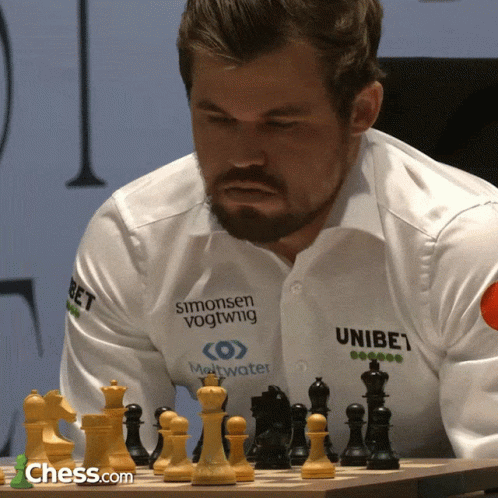Win the Game Before Others Know They're Playing
The most important influence work happens outside the meeting room. Learn how to map key players, align interests, build advocates, and address concerns proactively to make your outcomes inevitable.
You've been there before.
You walk into the meeting room, armed with data, logic, and weeks of preparation. Your presentation is flawless. Your case is airtight—and you’re a credible leader.
Yet somehow, you walk out with a tepid "we'll consider it" while your less-prepared colleague got instant approval last month for a half-baked idea.
Sound familiar?
The game was likely decided long before you showed up to play. Perhaps you’re not as influential as you think you are.
This happens often during hotly competitive hiring processes as well.
I recently advised a client targeting a role at a sub-$100M company through a process that we only stood a chance of winning if we could successfully influence the board, the entire executive leadership team, and an enthusiastic—but guarded and structured—internal recruiter.
My client was initially skeptical, because the role was a level beneath their seniority and significantly underscoped for what they thought the company needed. Furthermore, they had voluntarily offered an underwhelming compensation range.
Instead of kicking the opportunity to the curb, we worked to dig deep into the company's challenges through methodical and patient research.
Gathering extensive intel is an absolute must in order to better influence a negotiation in your favor.
We spoke with board members, executives across every function, the recruiter, and even former employees. Plus, we tapped into our network for insights on the company and the broader industry.
Together, we uncovered that while the company consistently delivered on their roadmap, their products weren't creating customer enthusiasm. Nobody would admit it publicly, but they were losing market share to competitors perceived as more innovative.
I coached her to skip the standard credentials pitch and instead "sell the vacation"—painting a vivid picture of their organization after their transformation. Behavioral psychology and sales 101 in motion.
We deeply emphasized the customer impact and how refreshing it was for their team to invest in the top talent on the market. We strategically played the top talent card because my client was “more horsepower” than the company bargained for when scoping the role.
Using the information we collected, we elevated the role from Senior Director to Vice President, using it as proof of the company's commitment to innovation and product excellence.
Upleveling the role and reframing the initial expectations was necessary to break the internal recruiter’s tendency to play by the rules.
When offer discussions began, we negotiated expertly because we'd already transformed how they valued both the role and my client’s contribution. We secured an annual deal well into the 7 figures—over double the stated range that topped out at $600K.
The negotiation brilliance worked precisely because of the strategic groundwork we'd laid methodically over the preceding weeks.
This isn't luck. It's strategic influence at work.
Weak executives prepare for negotiations in the 11th hour. Successful leaders create environments where their desired outcomes feel inevitable.
By the time the formal meeting happens, the decision is already made.
The Influence Reality Gap
Most executives get influence wrong.
They fixate on the moment—that flawless presentation, that killer speech, that masterful negotiation tactic. They obsess over their delivery, mistakenly believing that better performance in the room equals better outcomes.
Wrong.
80% of influence is locked in before you even step through the door.
The real work happens in the weeks, months, and sometimes years leading up to those critical decisions. It's the daily grind, the consistent effort—what some might call paying your damn dues—that ultimately yields extraordinary influence.
To assume influence happens in a vacuum is naive.
It ignores the messy reality of human psychology and social dynamics. It's why brilliant presentations crash and burn while mediocre ones inexplicably succeed. Why airtight logic gets dismissed while flimsy proposals gain traction. Why the most qualified candidate gets passed over for someone... else.
It's not just about bias, though that certainly plays a role. The reasons why influence eludes even the smartest leaders are far more nuanced:
When you challenge what people believe about themselves or the world, they get defensive.
Their gut reactions—fear, anger, the need to be "right" — slam the door on your ideas, no matter how sound. Protecting their identity becomes the priority.
That’s why it’s not about what you say, it’s about how you say it. You need to be persuasive and adaptable to every audience you encounter.
People cling to their existing beliefs like a lifeline, even when faced with hard evidence. It's human nature to resist being wrong, and their brains will actively twist information to fit their current worldview.
We all live in an echo chamber. We naturally seek out information that confirms what we already think, making it incredibly difficult to break through with new perspectives.
Influence isn't a level playing field.
If you don't share a common background or aren't perceived as credible by your audience, your message will likely fall flat. Some people, whether earned or unearned, often have an unfair advantage.
Your delivery matters, but not in the way you think.
A confrontational or judgmental style immediately puts people on the defensive. Influence thrives in an environment of respect and open dialogue, where you actively listen and understand others' motivations.
In short, you're not losing because your ideas are bad. You're losing because you're playing the wrong game.
What's missing isn't better PowerPoint slides—it's the invisible groundwork that determines how people receive your ideas before you present them.
Your capacity to build invisible influence—to shape decisions without formal authority—isn't just another leadership skill. It's your most irreplaceable professional asset.Now let’s get practical.
Four Strategic Influence Approaches
Successful leaders use four specific influence tactics that consistently deliver outsized results.
1. Identify Key Players
You present to the CEO but lose because her trusted advisor opposed your idea yesterday. You never even knew they existed.
This happens constantly. Leaders target the wrong people.
Stop focusing only on job titles and formal authority. The real decision often happens through people who never appear on the org chart.
Build a decision map with three layers:
Inner circle: People with formal decision-making authority
Middle circle: People who influence the decision-makers' thinking
Outer circle: People who influence the influencers
The middle circle is where most decisions actually get made. The former executive who still gets lunch with the CEO. The quiet technical lead whose opinion everyone secretly values. The executive assistant who's worked with the CFO for 15 years.
✅
Ask directly: "Who else weighs in on decisions like this? Who does the CEO listen to on these matters? Whose support would make the leadership team comfortable moving forward?"
I coached a senior leader who spent months trying to win over the CTO for a major digital initiative. No progress. When we mapped where the real influence lay, we discovered the quiet engineering director who had been with the company 20 years was the actual decision-maker. The CTO never approved anything without his blessing. One lunch meeting later, the project was greenlit.
The org chart lies. The influence map tells the truth.
2. Interest Alignment
Most influence fails for one simple reason: you're solving your problems, not theirs.
Stop pitching what matters to you. Nobody cares. Start with what keeps them awake at night. But please don’t ask, “what keeps you up at night.”
For each key stakeholder, pinpoint:
What they're measured on (their metrics)
What they're chasing (their ambitions)
What scares them (their risks)
Who they answer to (their relationships)
What can you understand about their home/life pressures (their personal drivers)
Then position your ideas to directly address these specific concerns. Your goal is to lift weight off their shoulders.
❌
Weak approach: "I'd be a great addition to your team. I have excellent qualifications."
✅
Strong approach: "Your Q3 report highlighted European expansion as your top priority while managing regulatory complexity. I've built three compliant commercial operations in EU markets, each delivering 30%+ growth while avoiding the compliance issues that delayed your competitors. Let’s map out a plan and get your take before we make a decision."
People will ignore potential gains but move mountains to avoid losses. Frame your proposal around solving their specific problems, and watch resistance melt away.
A client of mine needed approval for a $2M technology upgrade.
He tried for months, emphasizing improved capabilities and future-proofing. Nothing.
We shifted completely.
Instead of talking about technology, he walked into the COO's office and said: "I've identified why we keep missing delivery deadlines and losing key customers. Our current platform fails predictably every Tuesday during peak volume. The upgrade solves this specific problem and protects our five largest accounts."
Approved in 48 hours.
Stop selling features. Start solving their actual problems.
3. Build Support
The most important conversations about your ideas happen when you're not in the room.
The executive committee debates your proposal without you present. The leadership team discusses your candidacy after you leave. The budget committee evaluates your request behind closed doors.
If you haven't built advocates who will fight for you in these moments, you're already lost.
Strategic leaders build a network of champions who represent their interests when they're not present.
After key conversations, build advocacy in three simple steps:
Reflect value: "Your insight about [specific point] was particularly helpful."
Confirm alignment: "I see how my approach directly addresses your [specific priority]."
Invite support: "If you see the same connection, any guidance on communicating this to the broader team would be valuable."
Plant the seed: “I suspect that when you go speak with the team you’ll say, “Jacob’s got some refreshing ideas for us to consider. Let’s get him to put together a plan.” Does that sound about right?”
This creates champions without the awkwardness of directly asking for support. (Though it's still welcomed to be direct).
We naturally trust peer recommendations more than self-promotion. When respected colleagues advocate for your ideas, their endorsement carries 5x the weight of anything you could say yourself.
The most powerful advocate is the person who thinks supporting you was their own idea.
4. Address Concerns Upfront
The deadliest objections are the ones never spoken aloud.
They sit silently in executives' minds, hardening into immovable obstacles. By the time you discover them, it's too late.
Top performers eliminate these hidden roadblocks before they form.
Before any important proposal, run a simple pre-mortem: "If this initiative fails, what would be the top three reasons?" Then address those specific concerns proactively.
✅
Script example: "In evaluating approaches like this, many leaders worry about implementation timelines. Let me address that upfront: we've built a phased rollout that requires zero downtime and maintains full redundancy throughout the transition."
Unspoken objections don't fade away—they grow stronger.
When someone feels their concern isn't being addressed, their resistance doubles. Bring objections into the open where you can deal with them directly. In other words, embrace the uncomfortable, confront the challenges, and get ahead of it.
Find the landmine before you step on it. Then defuse it publicly.
The Invisible Influence Game
Your brilliant presentation represents 5% of the influence process.
The other 95% happens without you in the room.
For every minute you spend formally presenting an idea, executives spend hours discussing it without you present. In hallways after meetings. In text messages at night. In one-on-one conversations on the golf course where the real decisions get made.
This invisible game follows different rules.
Your PowerPoint skills and charisma mean notably less when you're not physically there. What matters is how deeply you've embedded your thinking into other people's minds.
Strong leaders shape these invisible conversations by:
Seeding ideas with key influencers weeks to years before formal proposals
Creating consistent narratives across multiple stakeholders
Developing frameworks that others naturally adopt and repeat
Establishing evaluation criteria that automatically favor their approach
People who consistently get their way aren't lucky. They've rigged the game.
They've systematically created conditions where their preferred outcomes seem obvious, logical, and inevitable. By the time the formal meeting happens, the real decision is already made.
Every interaction either builds or erodes your trust.
That casual conversation with the CFO. Your response to that challenging email. How you handled that team crisis. These moments compound over time, creating either a reservoir of influence or a deficit you can't overcome when it matters.
The most powerful leaders never scramble to build influence when they need it. They accumulate it systematically, day by day, long before specific stakes emerge.
Your influence account needs regular deposits. You can't make a withdrawal if nothing's in the bank.
The Ethical Dimension
Is strategic influence just manipulation in a business suit?
No.
The difference is simple: mutual benefit vs. exploitation.
I trust my clients to use this information for good and not evil. I reckon I’ll face the demons and repercussions of my career decisions at some point…
Manipulation creates winners and losers through deception. Strategic influence creates win-win outcomes through genuine understanding and value creation.
The ethical test is straightforward.
Are you helping others achieve their legitimate goals while achieving yours? Or are you tricking people into doing something that harms their interests?
True influence comes from a combination of logical reasoning, emotional intelligence, and personal credibility—not clever tricks or pressure tactics. When you genuinely understand what matters to others and align your proposals with their actual needs, you're building legitimate alignment, not manipulating them.
Sustainable influence doesn't rely on information gaps or power plays. It creates transparent value that makes supporting your position the obvious choice for everyone involved.
Strategic influence also demands accountability.
As you build influence, you accept responsibility for outcomes. This creates deeper trust than tactical maneuvers ever could.
Top leaders don't see stakeholders as targets to be persuaded—they see them as partners in creating outcomes that serve multiple interests simultaneously.Use this information ethically for the sake of us all.
Mastering Strategic Silence
Sometimes the most powerful thing you can say is nothing at all.
Most leaders talk too much. They over-explain, over-justify, and over-sell their positions. They push when they should pull. They create the very resistance they're trying to overcome.
The strongest leaders know when to shut up.
Strategic silence creates space for others to arrive at your ideas independently. People support what they help create. Sometimes your best move is stepping back and letting others take ownership of your concept.
This requires genuine confidence.
You must trust that your preparation will pay off without constant intervention. Like a chess master thinking five moves ahead, you create conditions where your preferred outcome emerges naturally rather than forcing it prematurely.
When you sense hesitation about your initiative, resist the urge to talk more. Instead, ask one open question:\
✅
"What aspects of this approach do you find most valuable?"
Then shut up and listen.
The information you gain will be worth more than any argument you could make.
When people feel ownership rather than pressure, resistance drops. By creating space for others to engage with your ideas on their terms, you transform opponents into allies.
Don't force agreement. Architect environments where agreement becomes the only logical conclusion.
The Implementation Framework
Stop theorizing. Start executing. Here's your three-step plan:
Step 1: Map the Territory
Before firing a single influence bullet, know exactly where to aim:
Who officially decides? (formal authority)
Who actually decides? (real influence)
Who do these people trust? (hidden leverage)
What happened last time? (historical patterns)
Where will resistance come from? (opposition mapping)
Don't waste ammunition on the wrong targets. A perfect strategy aimed at the wrong person equals zero results.
Step 2: Target Their Actual Needs
For each key player:
What keeps them awake at night? (real priorities)
What are they measured on? (success metrics)
What are they afraid of? (risk concerns)
How do they like receiving information? (communication style)
What objections will they raise? (resistance planning)
Speak to their needs, not yours. Your brilliant solution to a problem they don't care about is worthless.
Step 3: Execute Strategically
With your map and targets clear:
Who do you approach first and when? (sequence matters)
Which conversations happen privately vs. publicly? (format)
What exactly will you say to each person? (tailored messaging)
Who needs to be your champion when you're not there? (advocacy)
What success metrics emphasize your value? (measurement framing)
This is about enabling others to achieve what they want through approaches that also advance your objectives. You're building bridges, not barriers.
Put This to Work Now
Take these three actions immediately:
Map The Real Influencers
For your current top priority, identify every person who shapes the outcome. Not just decision-makers—influence shapers. Map their connections. Find the hidden players. You'll discover you've been targeting the wrong people with the right message.Create Custom Persuasion Plans
For your three most critical stakeholders, build tailored approaches that speak directly to their specific interests. Not surface-level word changes—fundamental reframing. How does your work solve their actual problems?Recruit One Power Advocate
Identify someone respected who could champion your position when you're not present. Don't ask directly for support. Instead, deeply understand their challenges and show how your approach solves their specific problems. Make supporting you their idea, not your request.
Influence isn't a presentation skill. It's an invisible system you build deliberately over time.
Every interaction either strengthens or weakens your position.
While average leaders obsess over what to say in the meeting, top performers focus on making the meeting itself a formality. They create conditions where their preferred outcome feels inevitable.
This approach demands discipline, preparation, and patience. But it transforms your results—changing the game from persuasion to orchestration, from pushing to pulling, from selling to enabling.
What looks like magic in the moment is actually the visible result of an invisible foundation laid methodically over time.
Need help applying this? Upgrade to paid for monthly live sessions with Jacob.
Stay fearless, friends.










